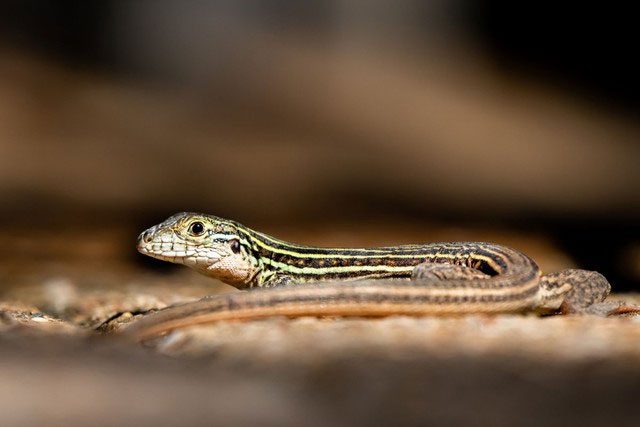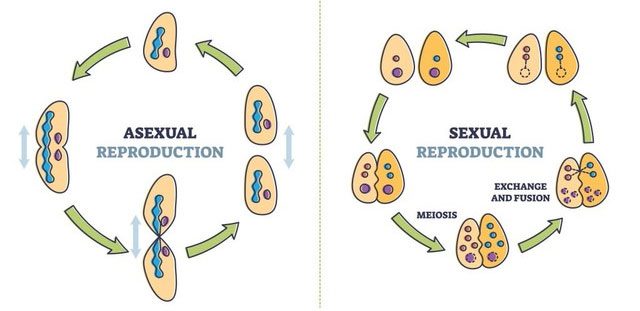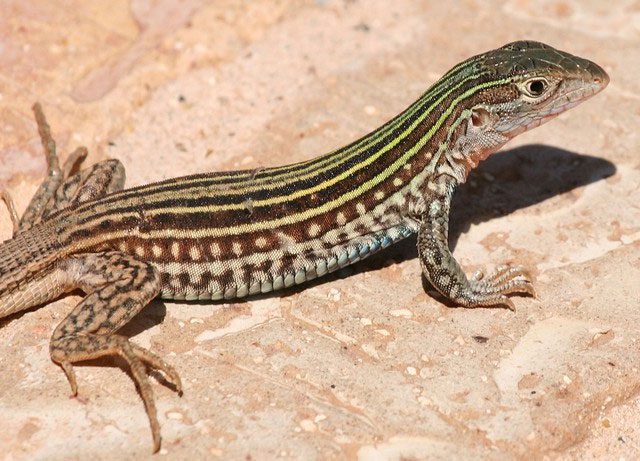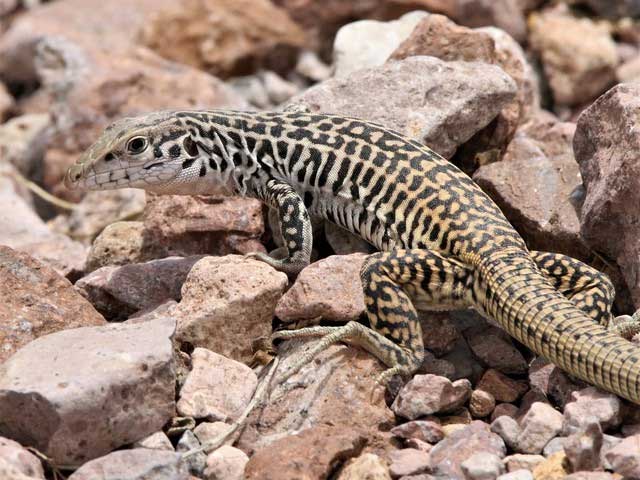A species entirely composed of females might sound like a fanciful fiction, but the whip-tailed lizard is one of the few all-female species on the planet. They do not require males for reproduction as they reproduce through parthenogenesis.
Most species in the animal kingdom that we can think of have distinct male and female pairs. Most show sexual dimorphism, where males can easily be distinguished from females.
However, in the diverse habitats of northern Mexico and the southwestern United States, there exists a peculiar species of lizard that is entirely female. How do they reproduce without males? How have they not gone extinct?

This whip-tailed lizard exhibits quite a distinct morphology.
Species of All-Female Lizards
In fact, there are about a dozen species of all-female lizards (belonging to the genus Aspidoscelis). They resemble most other lizard species in many aspects. These species are distributed throughout the diverse habitats of northern Mexico and the southwestern regions of the United States.
These lizards have quite a distinct morphology as they have evolved to change shape depending on their surroundings. They can often be identified by their scaly skin and whip-like tails that are longer than their bodies; hence, they are commonly referred to as whip-tailed lizards. Like most lizard species, they also possess a forked tongue. Their diet consists of insects, fruits, berries, and small mammals, depending on what their habitat provides.
However, unlike most lizard species, they reach sexual maturity at two years and give birth without the need for males!

A California whip-tailed lizard blending in.
How Do They Reproduce Without Males?
Whip-tailed lizards are parthenogenetic species, meaning they do not develop from the fusion of egg and sperm into a zygote. This mode of development is also observed in about 80 species of fish, reptiles, and amphibians.
There are two types of parthenogenetic species: obligate (incapable of sexual reproduction) and facultative (able to switch between parthenogenesis and sexual reproduction depending on environmental conditions). Whip-tailed lizards are the only species capable of complete parthenogenesis on Earth.

Genetic diversity is crucial for any species to evolve and adapt to their continuously changing environment.
In sexually reproducing organisms, females pass on half of their chromosomes, while males share the other half. After fusion, the genetic material from both the egg and sperm merges, forming a zygote that develops into an embryo. Consequently, the next generations exhibit higher genetic diversity due to the random combination of genes from both mother and father. This genetic variation leads to the combination of new traits among different individuals in the population, enhancing the species’ survival chances.
However, in asexual reproduction, there is no mixing of genes. All generations produced through asexual reproduction are exact copies of the mother. They have the same genetic structure as the mother, meaning a disease or predator could quickly wipe out the entire population, as there are no exceptional traits to help this species survive.

Genetic variability in sexual reproduction is much greater due to the mixing of genes.
So, without the assistance of sex to increase genetic diversity, how can these all-female lizards survive?
In fact, the females of the whip-tailed lizard species lay eggs containing double the standard amount of genetic material. With more chromosomes, there are more types of genes, as well as the traits formed from those genes. Scientifically speaking, they exhibit high levels of heterozygosity across generations.

Nearly one-third of all whip-tailed lizard species in the wild consist solely of females. Since they belong to the same family, it is highly likely that at some point in their evolutionary history, the males of this species mated with females of another species.
“Hybridization events” can occur when the females of one species become isolated from the corresponding males of that species and mate with males from another whip-tailed lizard species. This results in a hybrid offspring carrying two different sets of chromosomes from two different species, ultimately rendering their males sterile and gradually reducing the male population. Consequently, they have evolved a reproductive mechanism without the need for males.
Researchers suggest that the evolutionary process of a bisexual species, such as the whip-tailed lizard, requires a genetic distance of about 10 million years. This means that after the hybridization of common ancestors, it is estimated to take roughly 10 million years for the all-female whip-tailed lizard species to emerge.

It is estimated to take around 10 million years for the all-female whip-tailed lizard species to appear.
Although there are about 80 species of animals that can self-replicate, the whip-tailed lizard is perhaps the only species that does so in an “obligate” manner, while other bisexual species utilize parthenogenesis in the absence or scarcity of males.
This characteristic of whip-tailed lizards has attracted considerable academic attention, but asexual reproduction can never compete with sexual reproduction in terms of the genetic variability it provides.




















































